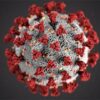How small can we go?

Treating diabetes with poop
Today, April 14, is National Poop Day. This was created by the Gastrointestinal Foundation to explain the important relationship between your poop and your health. Everyone poops. And while you may think it’s dirty brown goo, it contains tremendously valuable information about your health. Your poop contains a lot of microorganisms, such as bacteria. These…
Read more
THE key of the coronavirus
There is a lot in the news about the British variant of the coronavirus SARS-CoV-2. This variant causes the contamination numbers to rise quickly and caused schools to close. An important reason this variant can spread so quickly is a change in the spike protein of the virus. This spike protein is extremely important for…
Read more
Beyond light: looking with electrons
This text has been automatically translated from Dutch with Google Translate. Last year, Utrecht University bought a new device the size of two stacked cars. Why? To be able to look even better at particles of 100 nanometers (10,000 times as thin as a hair) in size. The new device is currently the best electron…
Read more
Computing realistic images
You probably recognize the situation: a photo is blurred because your phone was out of focus, or because you zoomed in too much. Scientists struggle with a similar problem. If they use a microscope to zoom in on something very small and make a picture, the image is always blurry. Even with the best microscope…
Read more
About us
How small can we go? The smallest things can have the biggest impact. Since mid-20th century science started to focus on smaller organisms, molecules and particles. Last year our way of living has been dramatically changed by a virus, which is one of the absolute smallest organisms. A tiny molecule, CRISPR-Cas, can change specific places…
Read more
